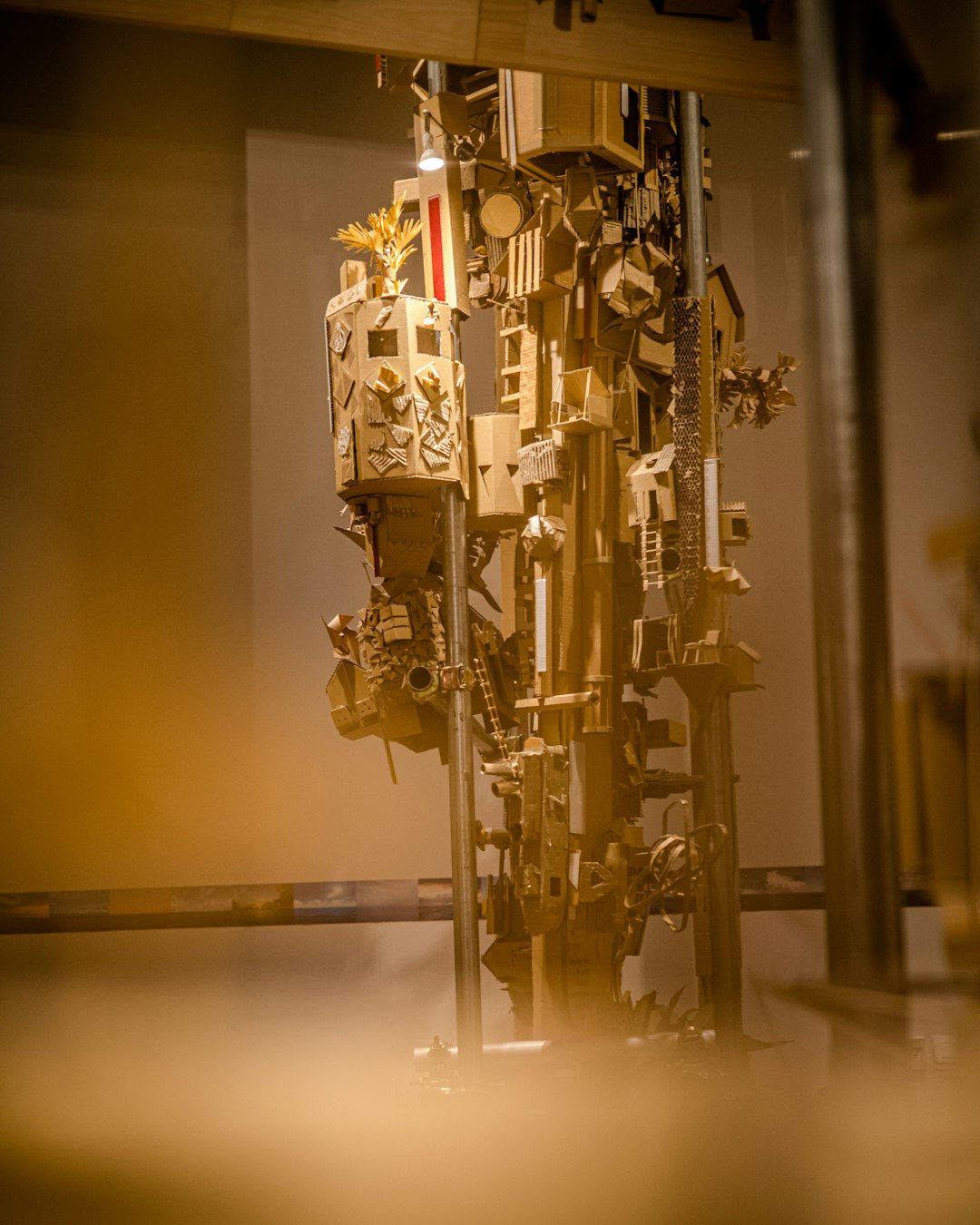Support our educational content for free when you purchase through links on our site. Learn more
How to Make a Robot That Moves and Talks with Cardboard [2024]
Have you ever wanted to create your own robot that can move and talk? Well, you’re in luck! In this article, we will guide you through the process of making a robot that moves and talks using cardboard. It’s a fun and educational project that you can do with your kids or as a solo endeavor. So, let’s dive in and get started!
Quick Answer
To make a robot that moves and talks with cardboard, you will need the following supplies:
- Cardboard
- Scissors
- X-acto knife
- Clear tape or glue
- Cutting mat
- Marker or pen
- Motors
- Batteries
- Wires
- Speakers
Follow these steps to create your cardboard robot:
- Design and cut out the robot’s body parts from cardboard.
- Attach the motors and batteries to the body using tape or glue.
- Connect the motors to the batteries using wires.
- Add the speakers to the robot’s head.
- Program the robot to move and talk using a microcontroller or Arduino board.
With these simple steps, you’ll have your very own cardboard robot that can move and talk!
Quick Tips and Facts
- Cardboard is an excellent material for building robots because it’s lightweight, easy to work with, and readily available.
- You can find templates for robot body parts online or create your own designs.
- Motors and batteries can be purchased from electronics stores or online retailers.
- Programming the robot to move and talk requires basic coding skills.
- Encourage creativity by decorating your robot with paint, markers, or other craft materials.
Now that you have a quick overview, let’s dive deeper into each step of the process.
Background: How to Make a Robot That Moves and Talks with Cardboard
Creating a robot that moves and talks with cardboard is a fantastic way to explore the world of robotics and engineering. It’s a hands-on project that allows you to learn about electronics, programming, and problem-solving. Plus, it’s a lot of fun!
Step 1: Design and Cut Out the Robot’s Body Parts
The first step in making your cardboard robot is to design and cut out the body parts. You can find templates online or create your own designs. Use a marker or pen to trace the templates onto the cardboard, and then cut them out using scissors or an X-acto knife. Be sure to cut out all the necessary parts, including the body, arms, legs, and head.
Step 2: Attach the Motors and Batteries
Once you have all the body parts cut out, it’s time to attach the motors and batteries. Motors are what will make your robot move, and batteries will provide the power. Use tape or glue to secure the motors and batteries to the body. Make sure they are securely attached and won’t come loose during movement.
Step 3: Connect the Motors to the Batteries
Next, you’ll need to connect the motors to the batteries. This is where the wires come in. Cut the wires to the appropriate length and strip the ends to expose the metal. Attach one end of each wire to a motor and the other end to a battery. Make sure the connections are secure and that the wires are not touching each other.
Step 4: Add the Speakers
To make your robot talk, you’ll need to add speakers. Speakers can be purchased from electronics stores or online retailers. Attach the speakers to the robot’s head using tape or glue. Make sure they are positioned correctly and securely attached.
Step 5: Program the Robot
The final step in creating your cardboard robot is to program it to move and talk. This will require some basic coding skills. If you’re new to programming, there are plenty of online resources and tutorials available to help you get started. You can use a microcontroller or an Arduino board to program your robot. Once you have the code written, upload it to the microcontroller or Arduino board, and your robot will come to life!
Congratulations! You’ve successfully created a robot that moves and talks with cardboard. Now you can have fun experimenting with different movements and sounds.
FAQ
How do you make a robot that moves and talks with paper?
While this article focuses on making a robot with cardboard, you can also create a robot that moves and talks using paper. The process is similar, but you’ll need to take extra care to ensure the paper is sturdy enough to support the robot’s movements. Use thicker paper or reinforce the paper with cardboard for added strength.
How to make robot with cardboard instructions?
To make a robot with cardboard, follow these instructions:
- Design and cut out the robot’s body parts from cardboard.
- Attach the motors and batteries to the body using tape or glue.
- Connect the motors to the batteries using wires.
- Add the speakers to the robot’s head.
- Program the robot to move and talk using a microcontroller or Arduino board.
How do you make a robot that can talk?
To make a robot that can talk, you’ll need to add speakers to the robot’s head. Connect the speakers to a microcontroller or Arduino board and program it to play sounds or speak using pre-recorded audio files.
What is the easy DIY robot?
An easy DIY robot is a robot that can be built using simple materials and basic tools. Cardboard robots are a great example of easy DIY robots. They are inexpensive, easy to make, and a great way to learn about robotics.
Read more about “How to Make a Cardboard Robot Without a Motor …”
Conclusion
Making a robot that moves and talks with cardboard is a fun and educational project that anyone can enjoy. It allows you to explore the world of robotics and engineering while unleashing your creativity. By following the steps outlined in this article, you’ll be able to create your very own cardboard robot in no time.
Remember to have fun and experiment with different designs and movements. And don’t forget to share your creations with others. Who knows, you might inspire someone else to embark on their own robot-building journey!
Recommended Links
- Robotic Applications in Home Cleaning
- Robotics
- Robotics Engineering
- Robots in Agriculture
- How to Make a Robot with Cardboard 2023





